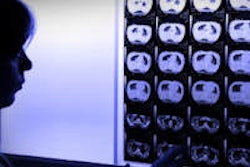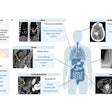
Radiologists serve the most Medicare beneficiaries per year compared with physicians across a range of other medical specialties, according to a study published in the May issue of the Journal of the American College of Radiology.
The finding underscores the importance of radiology's role in patient care -- and points to opportunities to expand that role, wrote a team led by Dr. Andrew Rosenkrantz of NYU Langone Medical Center.
"Compared with many other physicians, radiologists typically have less frequent face-to-face interaction with patients," the group wrote. "Nonetheless, radiologists still stand to have a large impact on patient care through the role of image interpretation in establishing diagnoses and thereby directing clinical management. And increasingly, radiologists are incorporating additional activities beyond image interpretation into their practices to better coordinate patient care and serve as ambassadors to enhance the face of the specialty."
Radiology's role
Rosenkrantz and colleagues sought to evaluate the role of radiology in patient care by calculating the number of unique Medicare fee-for-service beneficiaries served by radiologists and other physicians (JACR, May 2018, Vol. 15:5, pp. 734-739).
The researchers used Medicare data from 56 unique physician specialties to identify all physicians who provided services to beneficiaries in 2013. They then calculated the average number of unique patients served by the specialty, further stratifying these results among radiologists by physician and practice characteristics.
Radiologists, on average, served the largest number of unique beneficiaries of any specialty, with cardiology, cardiac electrophysiology, dermatology, and urology also in the top five, they found.
| No. of unique Medicare beneficiaries served in 2013 by specialty | |
| Specialty | No. of beneficiaries served |
| Diagnostic radiology | 3,150 |
| Cardiology | 2,511 |
| Cardiac electrophysiology | 2,279 |
| Dermatology | 2,164 |
| Urology | 2,061 |
Among all radiologists, those who served the highest number of unique beneficiaries tended to be male and generalists in smaller, rural, nonacademic, Southern practices. Among subspecialists, the number of unique patients served was highest for breast imagers and lowest for nuclear medicine physicians and vascular and interventional radiologists.
The study's findings highlight a golden opportunity for radiologists to further engage with patients and referring physicians, perhaps through direct communication of exam results or by acting as appropriate-imaging consultants, according to Rosenkrantz and colleagues. But they must be ready to come out of the reading room.
"The sheer number of unique beneficiaries served provides radiologists with immense opportunities to expand the face of radiology, but only if they are willing to change their historic stereotype role as 'invisible' physicians," they concluded.




















